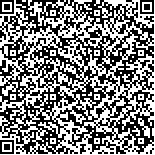下载中心
优秀审稿专家
优秀论文
相关链接
摘要

山区土壤含水量对山区植被生长监测、滑坡预测等工作具有重要意义,因此针对山地低矮植被区域,提出了全极化SAR图像的土壤含水量估计方法。为解决山地区域SAR图像几何形变和极化旋转问题,根据入射角、坡度、坡向信息定义了可测区域与不可测区域,并对可测区域后向散射系数进行校正。其次以密西根模型为基础,发展了低矮植被的散射模型。在假定植被和土壤特征不变的情况下,基于此散射模型并结合校正数据建立了山区土壤含水量反演方法。结果表明,模型反演的土壤含水量和实验点实测值基本一致,两个实验点反演值分别为14%和15%,实测值为11.45%和15.80%,能够满足一般应用的需求。
Soil moisture estimation from mountainous areas is important in many applications, such as vegetation growth monitoring, wildfire warning, and landslide prediction. Synthetic Aperture Radar (SAR) has been widely used to measure soil moisture in recent years due to its capacity to operate under different weather conditions, relatively strong penetrability, and sensitivity to soil moisture. However, the application of SAR to mountainous areas introduces two problems. On the one hand, geometric distortion and polarimetric rotation occur in SAR images. One the other hand, vegetation reduces the sensitivity of SAR images to soil moisture. Therefore, the retrieval of soil moisture from mountainous areas covered with low vegetation is still intractable. To this end, we present a soil moisture estimation method for mountainous areas covered with low vegetation.
To solve the problem of geometric distortion and polarimetric rotation caused by undulate terrain in SAR images, the images are classified as measured and unmeasured areas in terms of incident, slope, and aspect angles. Second, backscattering coefficients are corrected in terms of the irradiated area and local coordinates with respect to horizontal and vertical polarizations. Furthermore, a scattering model for low vegetation is developed based on the Michigan microwave canopy scattering model. Under the assumption that the characteristics of vegetation and soil are fixed, the change in backscattering coefficients is only related to the change in soil moisture. Consequently, a method of soil moisture estimation is established by combining the proposed scattering model with the previously corrected data.
Two spots with different levels of soil moisture are selected as the experimental sites from Maoxian, Sichuan, China. A field investigation is then carried out to collect the characteristics of vegetation and soil over the study areas. The soil moisture levels measured by two methods from the two experimental sites are 11.45% and 15.80% respectinely. The estimated results from the corresponding Radarsat-2 SAR image are 14% and 15%, with absolute errors of 2.55% and 0.80% and relative errors of 22% and 5%. The experimental results demonstrate that the proposed method is suited for general applications. Moreover, a soil moisture distribution map over the study area is generated, assuming that a similar vegetation observed from the two experimental sites covers the whole study area. Thus, the variation range of soil moisture is acceptable.
Different from the current studies focusing on the soil moisture estimation from plain areas covered with monotype vegetation such as crops and grassland, the proposed method can estimate soil moisture from mountainous areas covered with low vegetation. The proposed method monitors the soil moisture in mountains. Our next work will focus on the classification of mountainous areas. The integration of the classification result of the proposed method and the employment of multi-temporal SAR images can provide accurate and continuous monitoring over the observed areas.

